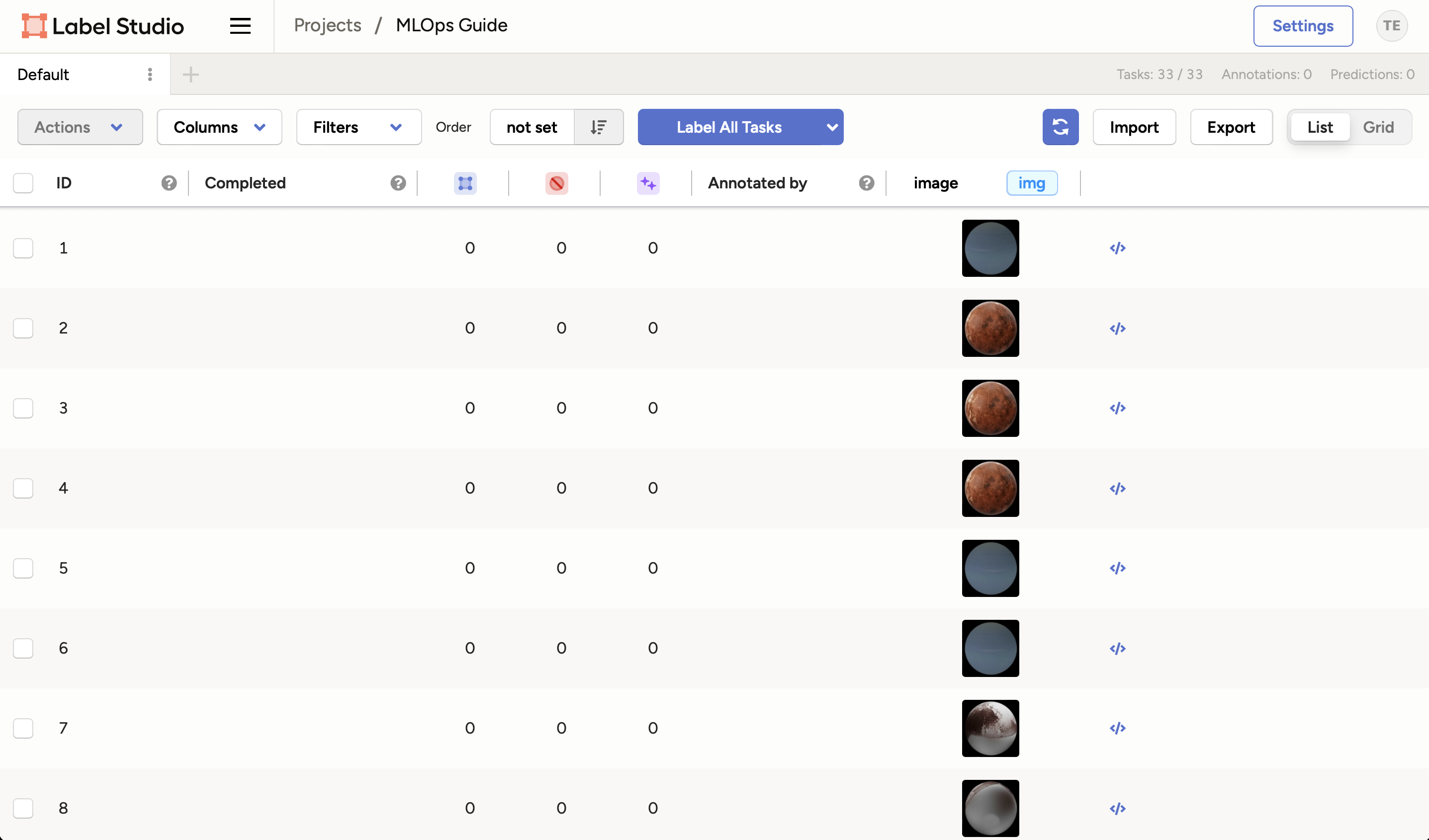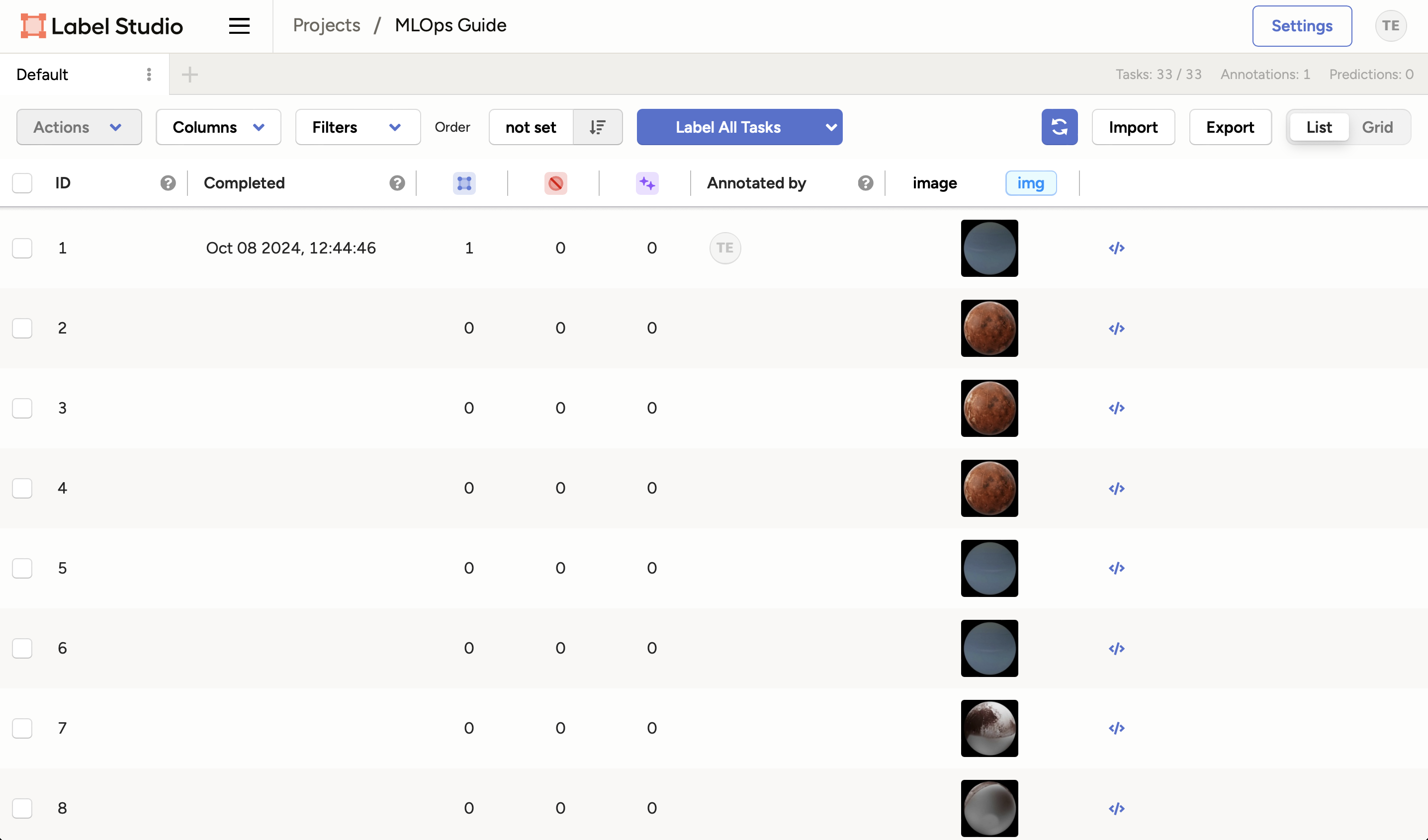Chapter 4.2 - Label new data with Label Studio¶
Introduction¶
In this chapter, you will explore the process of using Label Studio to manually annotate images.
The following diagram illustrates the control flow of the experiment at the end of this chapter:
flowchart TB
extra_data -->|upload| labelStudioTasks
labelStudioTasks -->|label| labelStudioAnnotations
subgraph workspaceGraph[WORKSPACE]
extra_data[extra-data/extra_data]
end
subgraph labelStudioGraph[LABEL STUDIO]
labelStudioTasks[Tasks]
labelStudioAnnotations[Annotations]
end
style workspaceGraph opacity:0.4,color:#7f7f7f80
style extra_data opacity:0.4,color:#7f7f7f80
style labelStudioTasks opacity:0.4,color:#7f7f7f80
linkStyle 0 opacity:0.4,color:#7f7f7f80Steps¶
Start the Labeling Interface¶
Make sure Label Studio is running at http://localhost:8080.
Click on the Label All Tasks button to start labeling the images. The images will be displayed one by one in sequential order.
Label an image¶
You will be presented with the image and the choices you defined earlier.
Tip
Next to each label, you will see a number or letter in brackets. This is the keyboard shortcut for the label. You can use this to quickly label the image by pressing the corresponding key on your keyboard.
- Select the correct label for the image. In this case, the image is of the planet Uranus.
- Click Submit to save the label.
- We will stop at the next displayed image for labeling.
Warning
We will not be labeling more images, as we need to keep some unlabeled data for the next chapter. You can go back to the project view by clicking on your project name on the top navigation bar.
Track the progress¶
In the project view, you can see the progress of the labeling task.
Info
Label Studio provides a lot of information such as the date and annotation author. This allows to have multiple annotations for the same data, which is a must for larger datasets as it helps to reduce bias.
Note that you can also import additional data and export the labels.
Currently, we have labeled one image but in the next chapter, we will learn how to use the model we trained earlier to label the images automatically.
Summary¶
You have labeled new data manually using Label Studio, which ensures the annotation process is not only systematic, but also uniform. The organizational capabilities of Label Studio contribute to creating high-quality labeled datasets.
That concludes this chapter.
State of the labeling process¶
- Labeling of supplemental data can be done systematically and uniformly
- Labeling of supplemental data is time intensive
- Model needs to be retrained using higher-quality data


